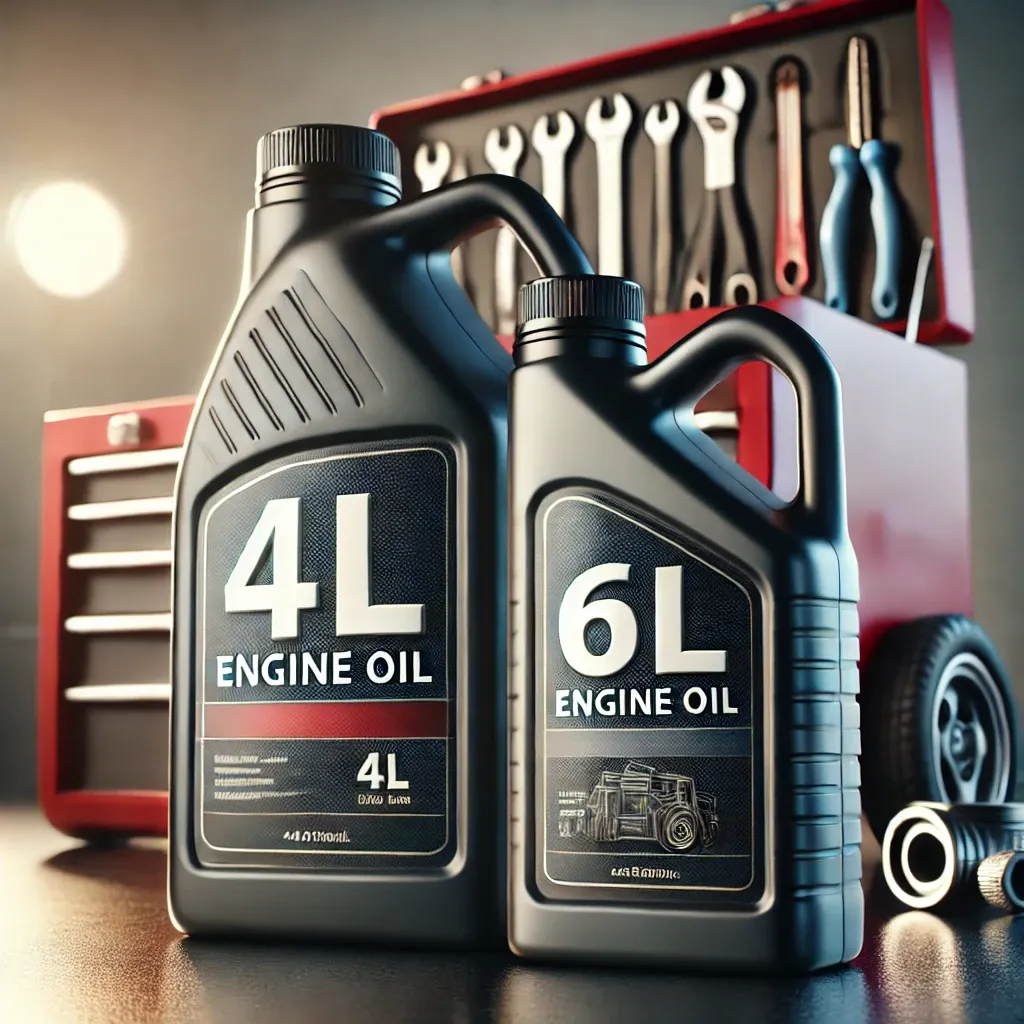Are you unsure whether to choose 4L or 6L engine oil for your car? How does engine oil maintenance relate to time? This article breaks down all the essential facts about engine oil sizes, lifespan, and usage.
Engine Oil 4L 6L: Which One is Right for Your Vehicle?
When it comes to engine oil, choosing the right quantity is crucial for maintaining your vehicle’s engine performance. Engine oil is measured in liters, and the most common sizes are 4L and 6L. But how do you decide which one to buy for your car?
Factors to Consider When Choosing Engine Oil Size
-
Engine Capacity Larger engines typically require more oil. If you own a larger vehicle, like an SUV or truck, you may need 6L of oil, while smaller vehicles generally use 4L.
-
Oil Change Frequency Some vehicles may need more frequent oil changes. If you use your car for long trips or in extreme conditions, 6L may be more practical.
-
Engine Design Depending on the engine type (e.g., V6, V8), the amount of oil required can differ. Always check your car’s manual to determine the exact quantity needed.
For instance, if your car is a compact sedan with a smaller engine, you may only require a 4L bottle. On the other hand, a large truck with a V8 engine could easily consume 6L during an oil change.
Why 4L or 6L Matters for Performance
Choosing the right oil quantity ensures optimal engine lubrication, minimizing wear and tear. Too little oil can lead to overheating, while too much can cause sludge build-up. Make sure to follow the manufacturer’s recommendations to maintain engine efficiency and longevity.
👉 Learn More About Engine Oil Sizes 👈
Engine Oil 4 Oil: What Does This Mean for Your Car?
If you’ve encountered the term “4 oil,” it could be a reference to a specific engine oil formula, or it might simply refer to the 4-liter quantity. It’s important to differentiate between the different types of engine oil and their ratings.
What to Know About “4 Oil”
-
Oil Grade and Viscosity Engine oils come in different grades, such as 5W-30 or 10W-40. The “4” in “4 oil” may indicate the container size (4 liters), but it’s crucial to check the oil’s grade to ensure it’s suitable for your engine.
-
Synthetic vs. Conventional Synthetic oils offer better performance and durability compared to conventional oils. If you’re using a 4L bottle of synthetic oil, it’s likely engineered for high-performance and longer oil change intervals.
Benefits of Choosing the Right Engine Oil
-
Engine Longevity The right oil helps prevent engine degradation over time.
-
Fuel Efficiency High-quality oils can improve fuel efficiency by reducing friction.
-
Optimal Performance Good oil supports better engine performance under various driving conditions.
For instance, I once switched to synthetic 4L oil for my sedan, and I noticed improved fuel efficiency and smoother engine performance over time. Always check your car’s manual for oil specifications and change intervals.
👉 Explore Different Types of 4L Engine Oil 👈
Engine Oil 6 Months: Is It Time for a Change?
Many car owners wonder about the best time to change their engine oil. Is it based on mileage, or is time (like 6 months) a factor to consider? Let’s break down how long engine oil should last.
When to Change Engine Oil
-
Mileage Traditionally, oil changes are recommended every 3,000 to 7,500 miles, depending on the type of oil and vehicle usage.
-
Time Interval Even if you don’t reach the mileage mark, changing your oil every 6 months is a good rule of thumb. Oil degrades over time, losing its viscosity and ability to lubricate properly.
-
Driving Conditions If you frequently drive in stop-and-go traffic, extreme temperatures, or tow heavy loads, you might need to change your oil more frequently.
If you haven’t driven much in the past six months, you may think your oil is still good. However, oils can break down over time, even if the car isn’t used much. I had a client who only drove her car occasionally, but after six months, the oil needed to be replaced as it had lost its effectiveness.
Practical Tips for Maintaining Engine Oil
-
Regular Checks Periodically check your oil levels and quality.
-
Follow Manufacturer Recommendations Your car’s manual will give specific guidance on oil change intervals.
-
Use the Right Oil Ensure that you use the correct oil for your vehicle to maximize engine life.
👉 Understand Oil Change Timing 👈
Conclusion
Choosing the right engine oil—whether it’s a 4L or 6L bottle—plays a critical role in maintaining your car’s engine. The quantity you need depends on the engine size, usage, and manufacturer recommendations. Additionally, knowing when to change your oil, whether after 6 months or a set mileage, ensures your engine continues to perform at its best. By staying on top of engine oil maintenance, you’re not only protecting your engine but also optimizing fuel efficiency and vehicle longevity.
Remember, regular oil checks and timely changes can save you from costly repairs in the future, making engine oil maintenance an essential part of car care.






